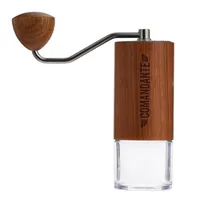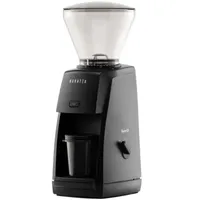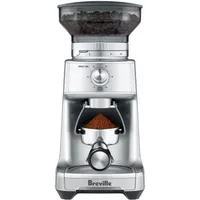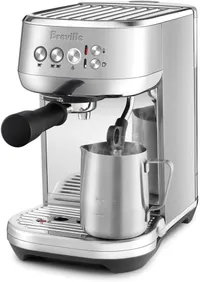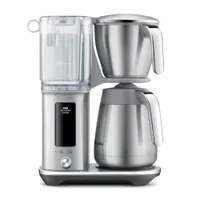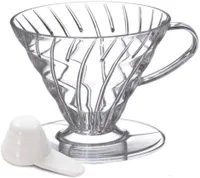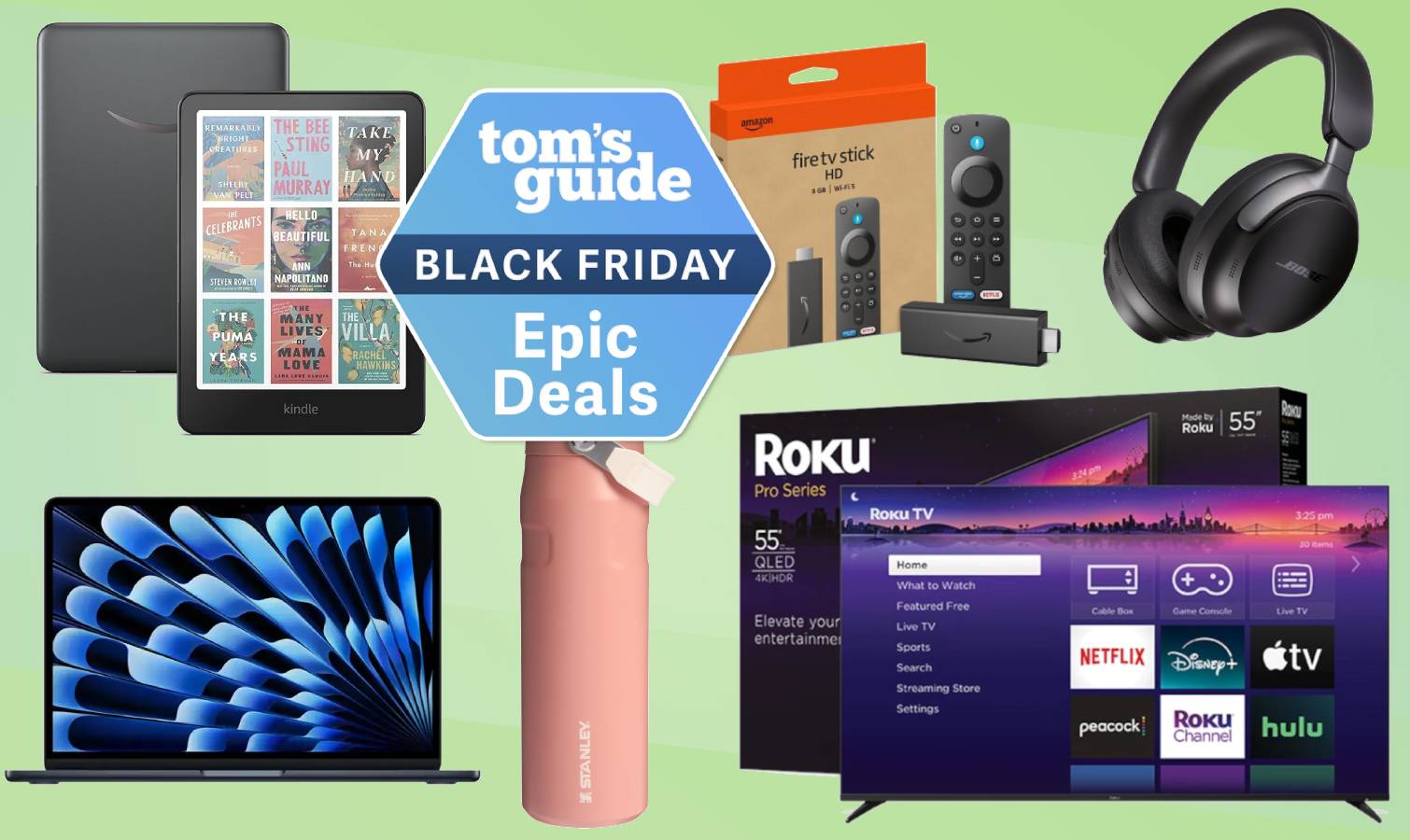I used the 'wrong' grind size for 3 coffee brewing methods — it proves why you shouldn't buy pre-ground beans
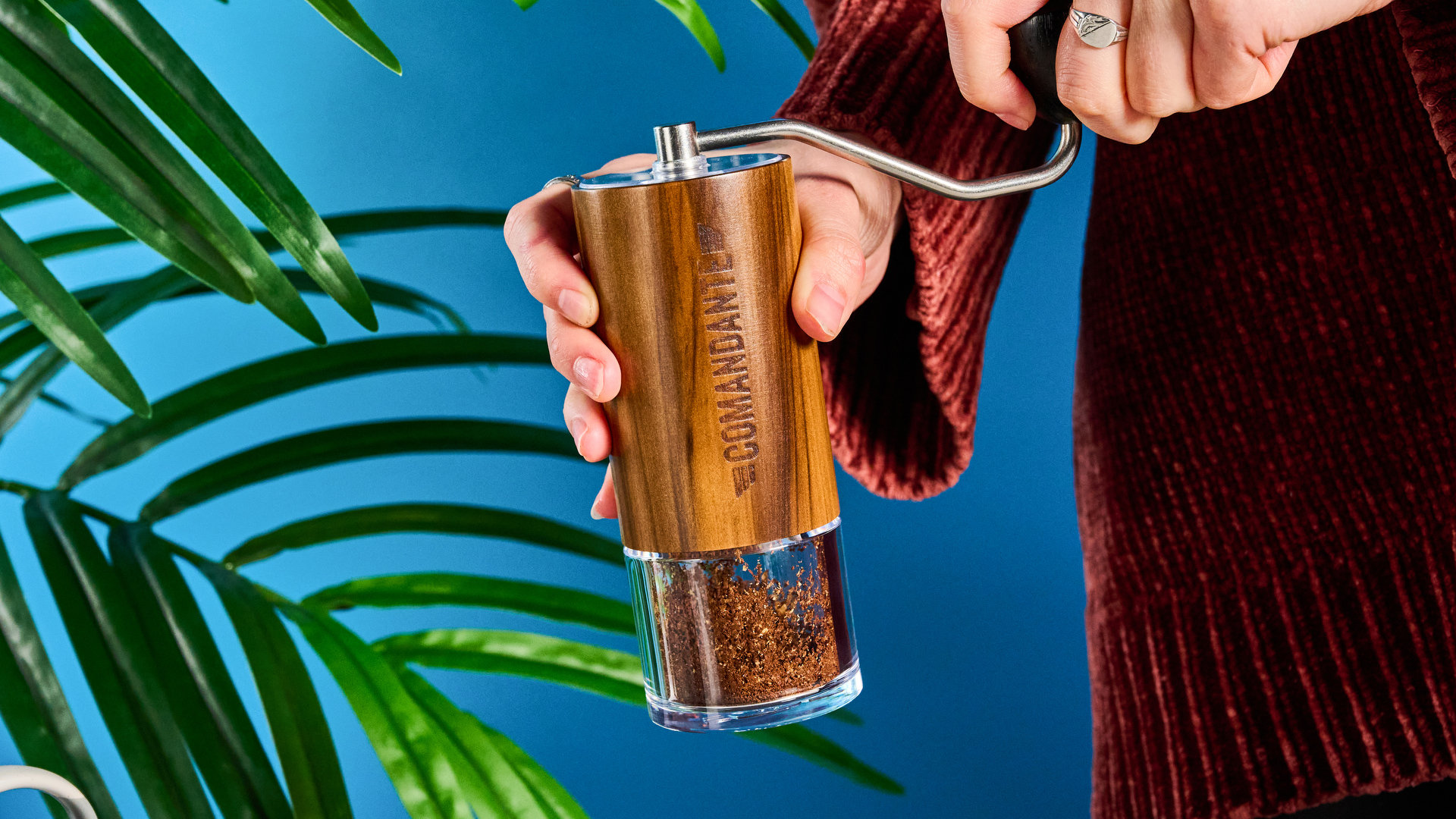
I'm an ex-barista and now a professional coffee snob, and I'll be the first person to tell a coffee newbie of the horrors of using pre-ground coffee. But there's only so much I can say.
If you've got one of the best coffee makers — like the Breville Luxe Brewer — or the best espresso machines — like the Breville Bambino Plus — you can easily make barista-quality coffee from the comfort of your kitchen. And I'm here to help!
The most important thing? Grinding coffee correctly. It can be really hard to know what the correct grind size is. But for the sake of science, I purposefully used the "wrong" grind size for espresso, drip, and pour-over. This is what happened. Don't make the same mistakes as me!
Can you use the same coffee grind for everything? The methodology
For this experiment, I used the best coffee grinder in the world: the Comandante C40 MK4. If you make coffee at home, I recommend buying a grinder. This ensures you know exactly what size your coffee is being ground to.
The Comandante C40 MK4 is pretty pricey, though, so I've included some cheaper options here.
Although it's a hand grinder, which can put some people off, if you're even a tiny bit serious about coffee, this is the grinder for you. I use the Comandante C40 MK4 every single day at home. True, I only gave it 4.5 stars in my review, but in terms of pure functionality, it's a 5-star product. I just knocked half a star off because Comandante's military branding is cringe and weird. We're making coffee, not glorifying war. The function of the grinder is a total 10/10.
The Baratza Encore ESP achieved an impressive 4-star rating in my review. I love pretty much everything about this machine: it's perfect for beginners, it has impressive grind uniformity (meaning the granules are the same size), minimal clumping, and low retention. While it could be a touch more consistent, it's a great-value budget coffee grinder.
I awarded the Dose Control Pro a lovely 4 stars in my review, and I stand by that. Although it was a touch more prone to retention than the Baratza, the Breville has very little clumping and grinds surprisingly uniformly. The Dose Control Pro is the best bang-for-buck grinder out there, 100%.
I ground three rounds of coffee beans: Fine, medium-fine, and medium.
Espresso calls for a fine grind, pour-over calls for medium-fine, and drip coffee calls for medium.
Get instant access to breaking news, the hottest reviews, great deals and helpful tips.
I used three coffee makers for this experiment: the Breville Bambino Plus, Breville Luxe Brewer, and the Hario V60.
This is the espresso machine I use every day at home, and my personal favorite machine on the market. Thanks to the PID controller, powerful 4-home steam wand, and compact size, it's the ideal machine for beginners, aficionados, and those with small homes alike.
The Breville Luxe Brewer is one of the best drip coffee makers money can buy. It can brew 10 cups of hot, fresh drip coffee in three minutes, which is faster than my kettle boils. It's also accredited by the Specialist Coffee Association, so it will impress coffee purists, caffeine guzzlers, and everyone in between.
There's a reason why this is the most famous pour-over coffee maker in the world. The Hario V60 is like no other — its intelligently designed grooves ensure the coffee brews evenly, and it's so easy to experiment with. You can easily make barista-quality coffee with just a little practice with the Hario V60.
After grinding all my beans fine, medium-fine, and medium, I then made three coffees on each coffee maker — using all three bean sizes.
Can you use the same coffee grind for everything? The results
Here I'll go through all my results, including each brewing process, flavor, and overall thoughts.
Espresso
Espresso is probably the most rigid brewing method. By "rigid", I mean the brewing method where you have to follow the rules; otherwise, you'll get nasty coffee, or no coffee at all.
I weighed out 18g of coffee, tamped, and pressed the double-shot button. I was aiming for 36g of espresso out in 25-28 seconds. If your espresso reaches double its weight in under or over that window, it will be under-extracted or over-extracted, respectively. This will result in sour, watery, or bitter, burned coffee.
Here are three photos of espresso. Can you guess which ones used finely ground beans (the correct size), medium-fine (too coarse), and medium (way too coarse)?

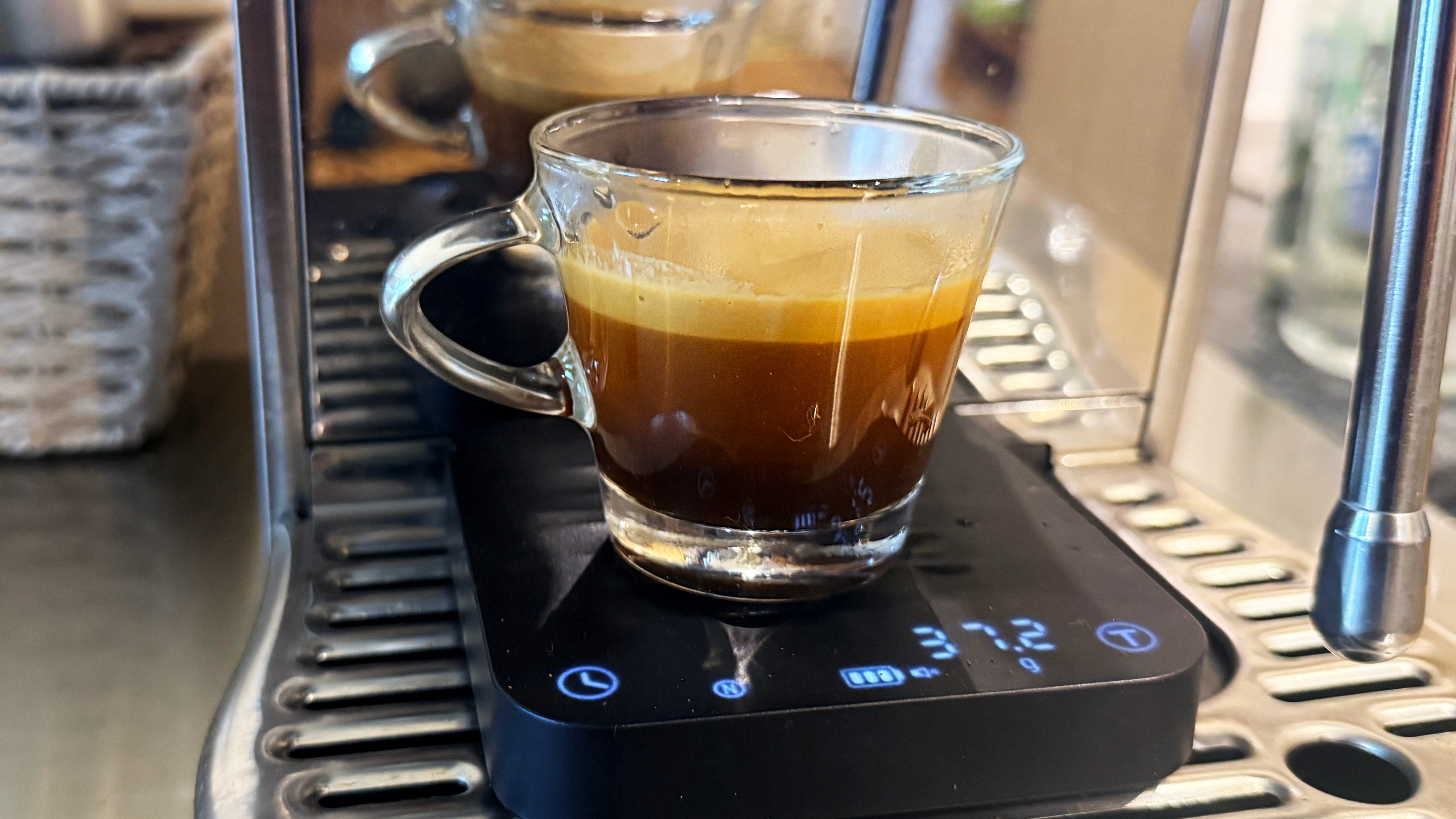

If you guessed: 1 = medium-fine, 2 = fine, and 3 = medium, you'd be correct. Take another look at the espresso. Look at the top of number 2, and compare it to number 1 and 3. The fluffy crema on espresso 2 shows that it has been extracted correctly, and the shot has been pulled with the appropriate degree of pressure.
The lack of crema in pictures 1 and 3 means that the coffee was ground too coarsely, as there was no pressure, and the coffee oils weren't extracted adequately.
As you might have guessed, espresso 1 and 3 tasted horrible. They were both sour and watery, which means under-extracted.
Take another look at the coffee scale underneath, too. I used the Wacaco Exagram Pro, which is the best budget coffee scale for espresso. The time on picture 1 was 20 seconds, and the time on picture 2 was 25 seconds. Compare these to the time on picture 3 — just 13 seconds.
As I said earlier, I was looking for 36g of coffee in 25-28 seconds. It's not just the timings that are way off, though. Look at the weights. Espresso 1 weighs 46g, espresso 2 weighs 37g, and espresso 3 weighs 52g.
You want to get 36g of espresso in 25-28 seconds, not 52g of coffee in 13 seconds. This means that espresso 1 and 3 were ground much, much too coarsely.
If you want to get the best espresso at home, you need to use the correct grind size. Espresso 2 is what you want — you want the coffee to pour like honey.
Pour-over
I used my tried-and-true Hario V60 and Hario's unbleached #2 papers for this experiment. As with the espresso section of the test, I used espresso grind, pour-over grind, and drip grind with the V60.
V60 is better for experimentation. Only super-fine coffee will clog the filter, so you can usually grind finer or coarser depending on your personal preference. If you ask me, too-fine and too-coarse coffee results in bitter or sour tastes, but obviously you do you. If you like bitter or watery coffee, be my guest. Unlike espresso machines, which physically cannot pull shots with too-finely ground coffee, you will at least get some liquid out of it.
I dosed 15g of coffee in each cup, and was aiming fro 270g of water (sometimes I over-poured slightly, oops).
I took three photos, each with the weight and times visible. From the brewing time displayed on the coffee scale, can you guess which coffee used which grind size?
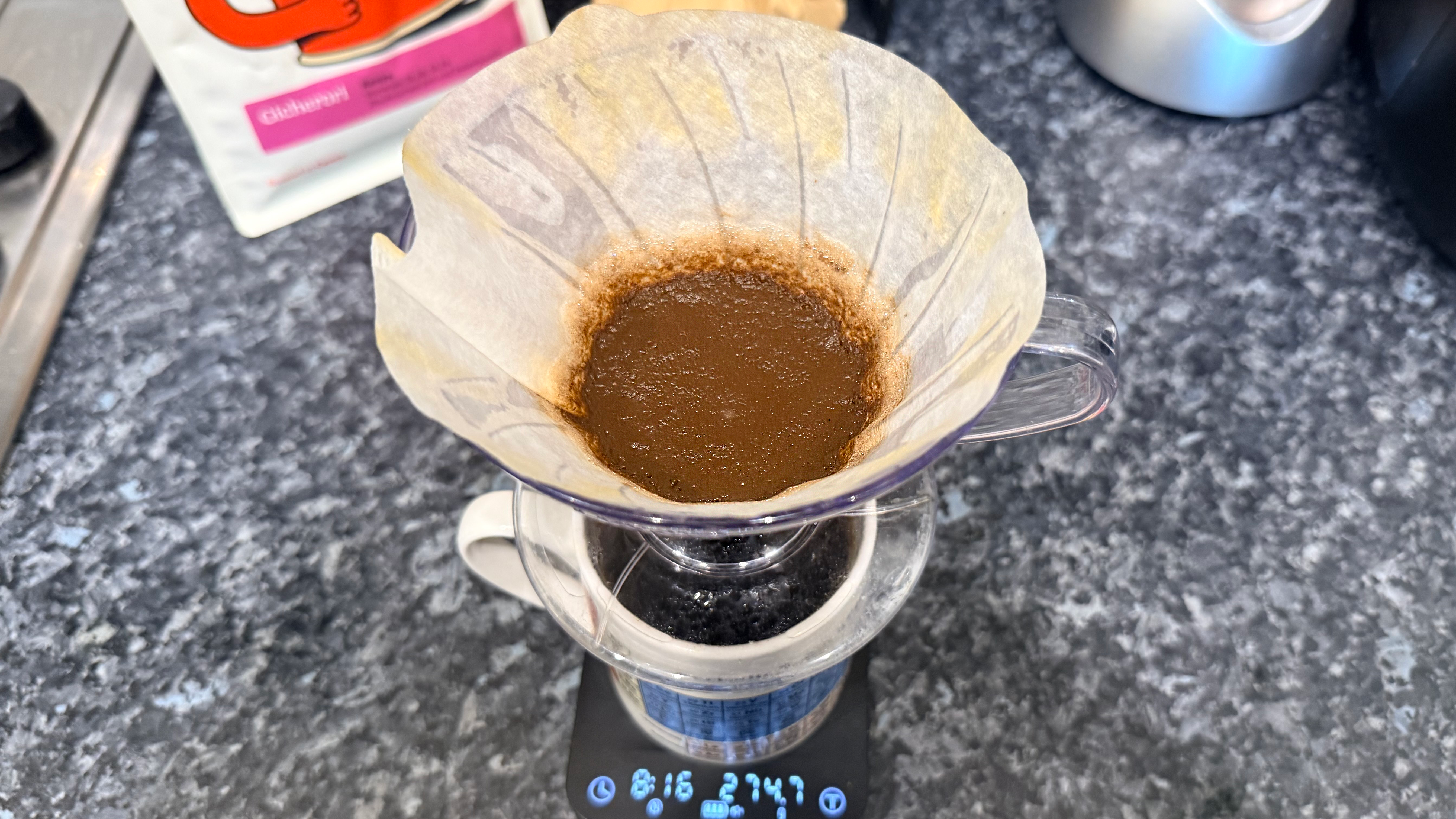
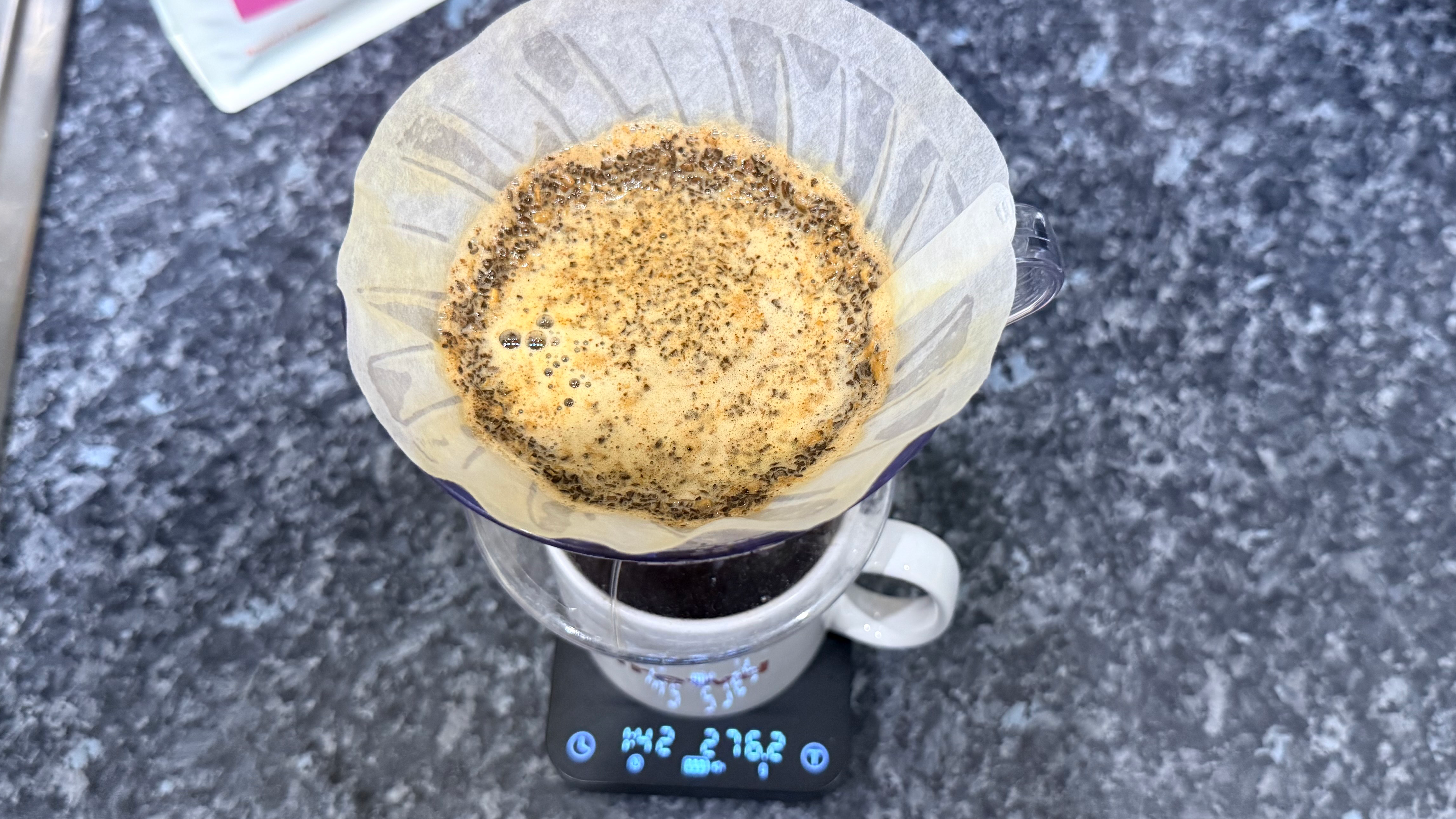
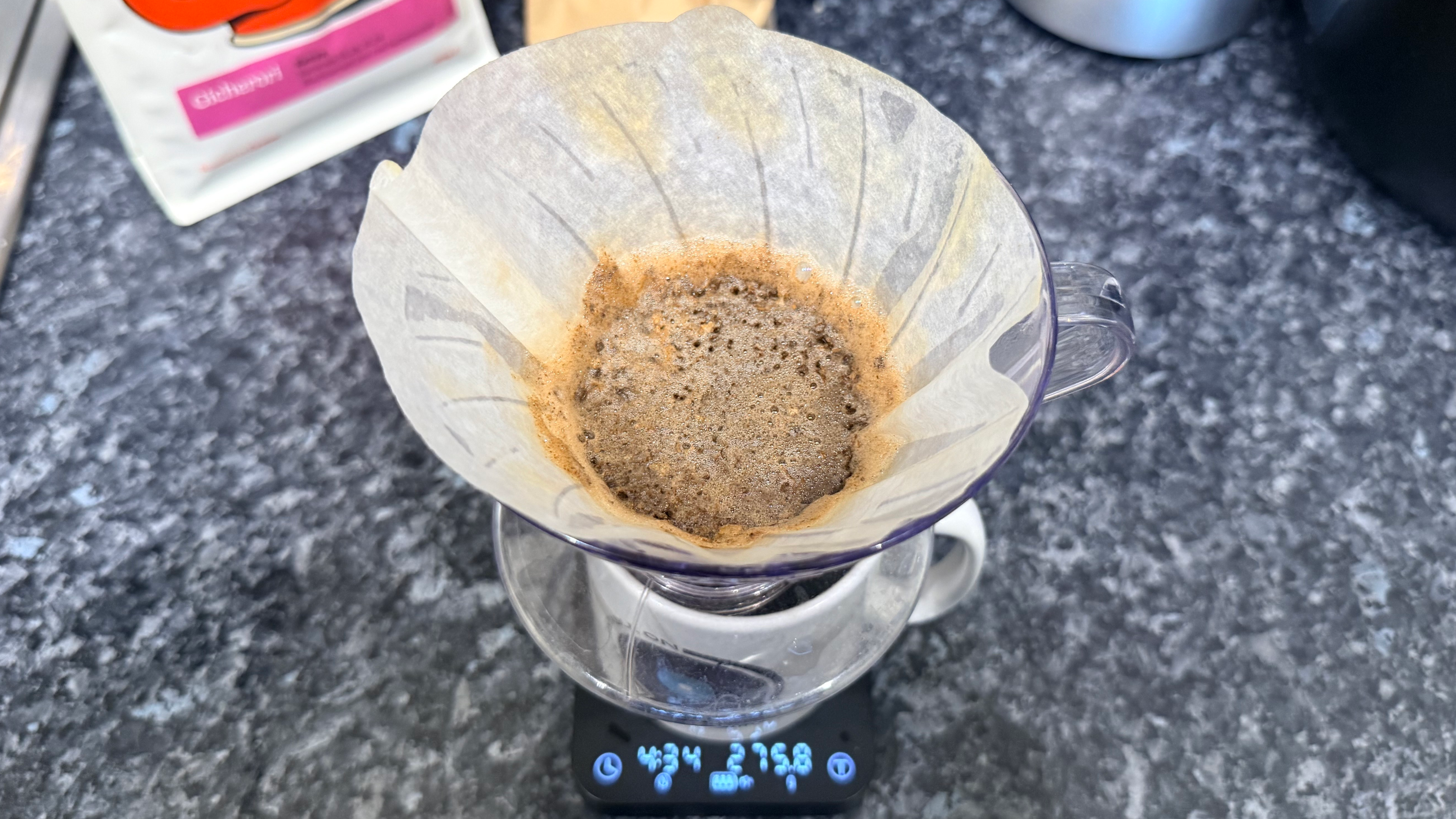
If you guessed: 1 = fine, 2 = medium, and 3 = medium-fine, you'd be right!
As you can tell from the times, picture 1 is very over-brewed, picture 2 is very under-brewed, and picture 3 is just right. Although picture 3 took an extra couple of seconds to pull through the final dregs of water, this was the best coffee overall.
I gave the over-brewed and under-brewed coffees to my boyfriend (he's not picky in the same way I am) and I drank picture 3. It tasted delightful, just as I'd expect from a V60, with delicate floral notes and no bitterness whatsoever.
My boyfriend had to put milk in picture 1 because it was so bitter, and he said picture 2 tasted like dirty water.
Sounds yummy, right?
This is why using the right grind size is so important: you get the perfect balance of coffee flavors for your brewing method.
Drip
Drip coffee is probably the most forgiving brewing method out there. Unlike espresso or pour-over, drip has a reputation for being just "standard" coffee and isn't expected to have as much flavor finesse.
As a result, you can pretty much grind your coffee from about 600-1,400 microns and you probably won't upset that many people. For this experiment, I ground my coffee to a medium size, like standard white sugar size.
I brewed using the Breville Luxe Brewer, using around 12 ounces of water (so a Starbucks Tall). The Breville brews all sizes in 3 minutes, so there was no difference in brewing time.
Here are three photos of the resulting coffee. Can you guess which is which?



If you guessed 1 = medium, 2 = medium-fine, and 3 = fine, you'd be right! As I said, this one is a little trickier as you can't see the difference as clearly as you can with the espresso and pour-over.
Drip coffee is more forgiving, but I was actually quite surprised when all three of these coffees tasted more or less the same. Picture 3 was a touch bitterer than picture 2, and picture 1 was the most "faithful" coffee flavor, but all three were drinkable.
I would still err on the side of medium-to-medium-fine with drip coffee, though, as a French press grind will result in watery and weak coffee. I tested one drip batch with French-press-ground coarse beans, and it was like drinking brown water. Nasty.
But there's a catch...

So, how do you know if your coffee is ground perfectly?
Unfortunately, there's no one answer. Different coffee beans — various roasts, washing styles, bean size, and even humidity — can affect the required grind size. As a result, you're going to have to use a little trial and error the first time you use new beans or a new machine.
For espresso, I recommend you grind your coffee to around baker's sugar or fine salt texture. It should stick to your fingers. You don't want it to be like powdered sugar (too fine) or kosher salt (too coarse).
If you want to get super science-y, it needs to be around 200-500 microns. As I said, different beans will call for different grind sizes.
This isn't going to help you, but I'll tell you exactly the perfect grind size for the beans I used in this experiment. I used click 12 on my Comandante C40 MK4 with natural Kenyan medium-roast beans. For espresso, this gave me the perfect 1:2 ratio in 25 seconds.
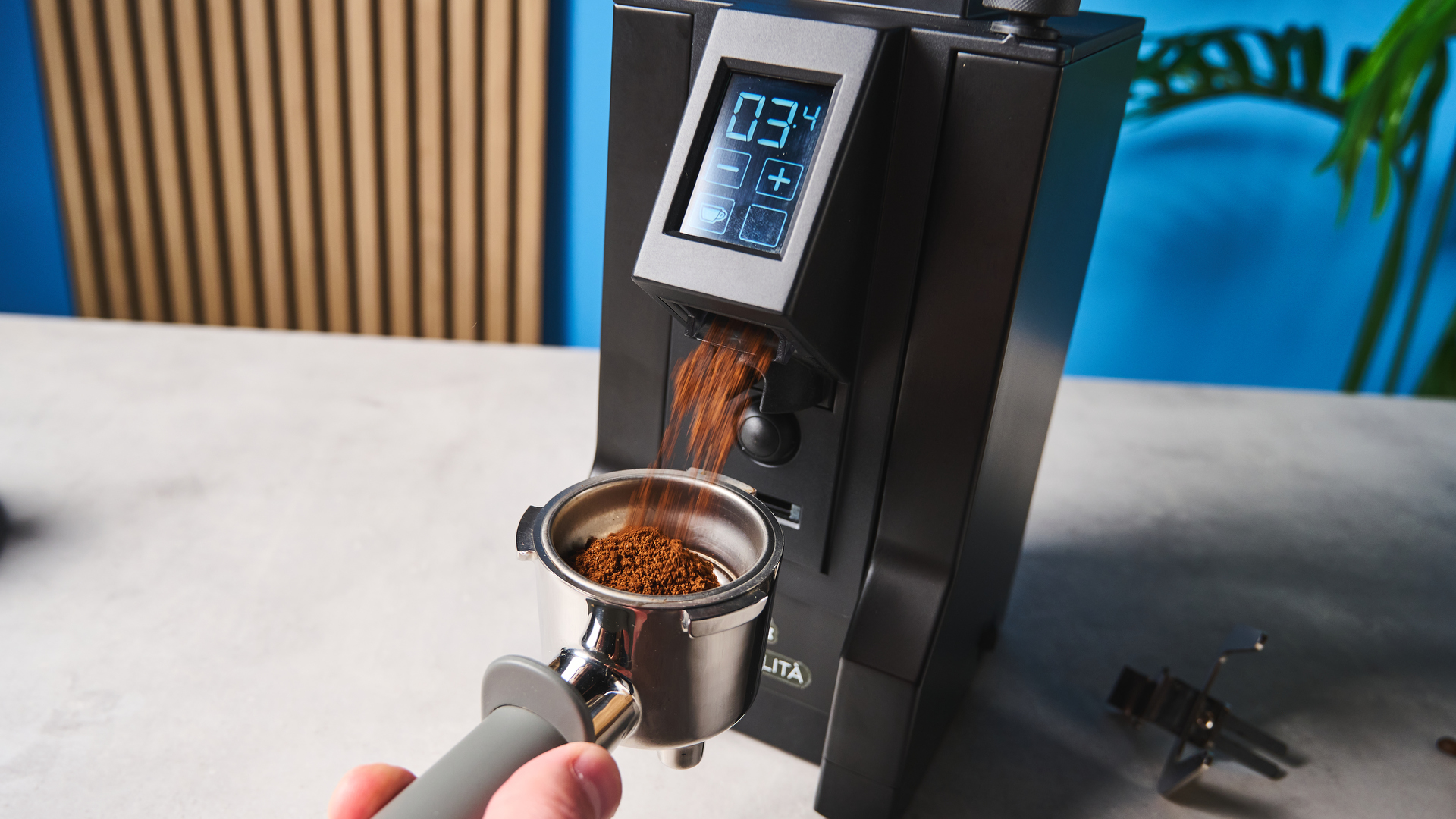
For pour-over, you're going to want something a little more like sand. Some sticks to your fingers, but some doesn't. You'd want something more like 700-1000 microns for V60, and even coarser — up to 1,100 microns — for Chemex. I used click 25 on my Comandante C40.
For drip coffee, you want medium-ground. This is around the texture of standard white sugar. In microns, this would be around 700 to 1,200 microns. I used click 30 on my Comandante C40.
This all depends on your beans, though. Lighter roast beans need a finer grind than dark roast beans. Washed beans can benefit from a finer grind than natural beans.
Didn't I say it was unhelpful? There's no one answer to the age-old question of "What grind size should I use?" Unfortunately, you need to get a good grinder and use trial and error to find the perfect grind size for your beans. Each grinder's user manual will have information on which grind setting is best suited to each brewing method.
I can tell you, however, that it's definitely not the pre-ground French press coffee from the grocery store.

Follow Tom's Guide on Google News and add us as a preferred source to get our up-to-date news, analysis, and reviews in your feeds.
More from Tom's Guide
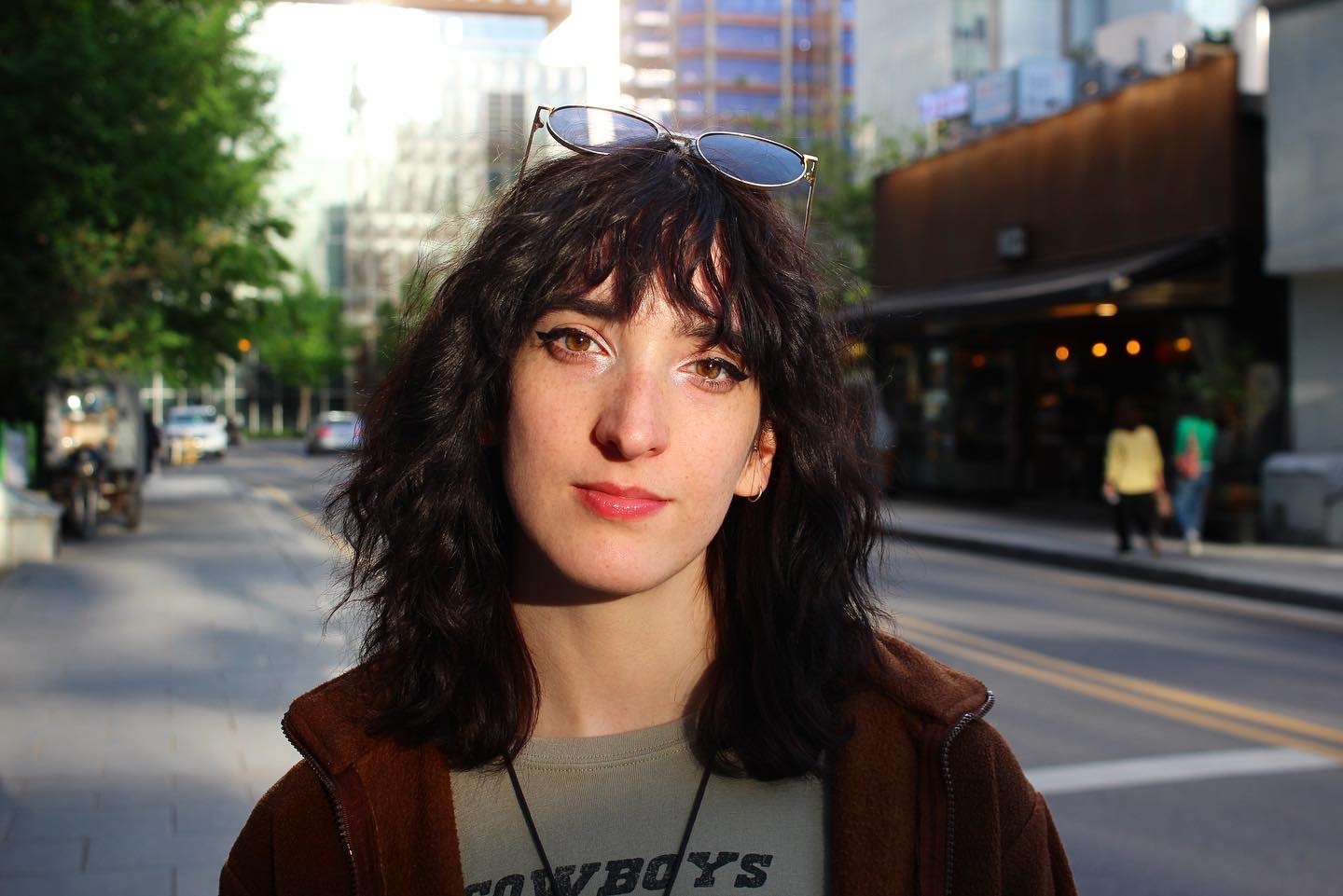
Erin Bashford is a senior writer at Tom's Guide, focusing on reviews. She has a Masters in Broadcast and Digital Journalism from the University of East Anglia. As an ex-barista, she knows her way around a coffee machine, and as a music lover, she's constantly chipping away at her dream of having a multi-room home sound system. In her spare time you can find her reading, practising yoga, writing, or stressing over today’s NYT Games.
You must confirm your public display name before commenting
Please logout and then login again, you will then be prompted to enter your display name.
